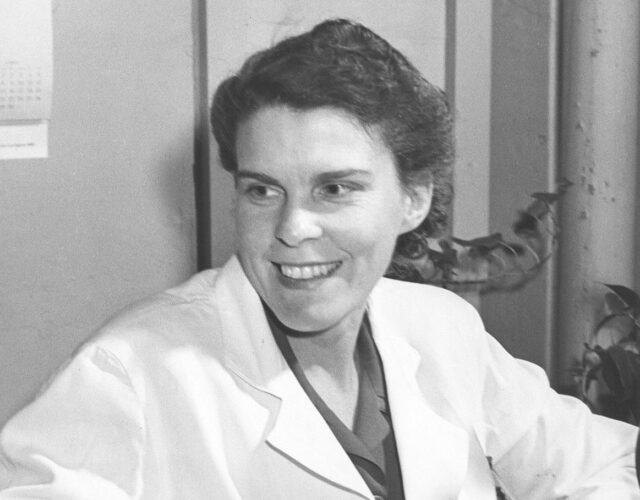I first came across polio researcher Isabel Morgan in the late 1990s while writing the first edition of my book Experimenting with Humans and Animals. In it I noted that Morgan and Jonas Salk were the only individuals working on a killed-virus polio vaccine in the early 1950s, which wasn’t entirely true. When I wrote a heavily revised second edition in 2020, I was determined to find out more about Morgan, spurred on in part by David Oshinsky’s account of her in Polio: An American Story (2005). Oshinsky devoted nearly three pages to Morgan’s background and polio research, which ended in 1949 when she left vaccine research altogether. Morgan was more important than I had realized.
As relayed in several accounts, Morgan’s life seems depressingly similar to the lives of other women scientists. According to Oshinsky, she had little chance of advancement at the Rockefeller Institute in the late 1930s and was paid less than men doing the same work. And so, the story goes, she left science in 1949 to get married—as if these two things were incompatible—and become a 1950s housewife. Her husband, former U.S. Army colonel Joseph Mountain, an early entrepreneur in computer data analysis, earned an obituary in the New York Times when he died in 1970, but when Morgan died in 1996, the Times was silent. I felt much of her story remained untold.
When I first encountered Morgan, I thought, “Oh cool, a woman,” and went on to tell the story of Salk and Sabin and monkeys and children with disabilities. I seem to remember getting a note from some of her family members thanking me for even mentioning her in my book, but I did not follow up. This time around I wanted to know more. I looked for her scientific papers, which were much easier to find than in the 1990s, when my browser was Netscape and the whole idea of doing research online was still new (at least to me).
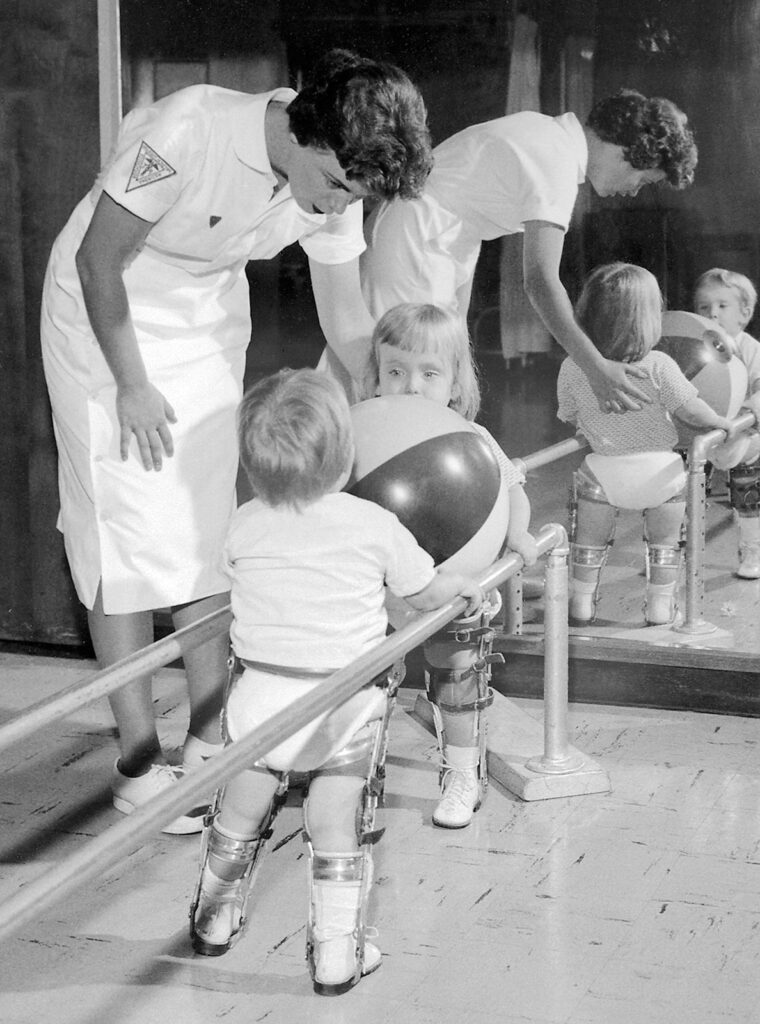
I found, as I expected, a lot of papers written from 1936, the year she obtained her PhD at the University of Pennsylvania, to around 1950. These included work on influenza, pneumonia, eastern equine encephalomyelitis, and some early work on Streptococcus infections. It also included many papers on polio, some single-authored and others written in collaboration with Howard Howe and David Bodian at Johns Hopkins University.
Howe had organized the polio lab at Johns Hopkins in the late 1930s and recruited Bodian; in turn, Bodian recruited Morgan, who was working with virologist Peter Olitsky at the Rockefeller Institute. Between 1944 and 1949, the team of Howe, Bodian, and Morgan did critical work on typing the different strains of the poliovirus. They determined there were three strains—all dangerous—and named one Brunhilde, after one of the team’s experimental chimpanzees. They also developed a vaccine made with killed poliovirus that provided immunity against all three strains in experimental monkeys and chimpanzees.
At the time there were two types of vaccine technology, killed virus and weakened live virus. Both could induce immunity. Killed-virus vaccines were safer because, unlike live-virus vaccines, they could never induce the disease. But there was much debate about killed-virus vaccines’ long-term effectiveness.
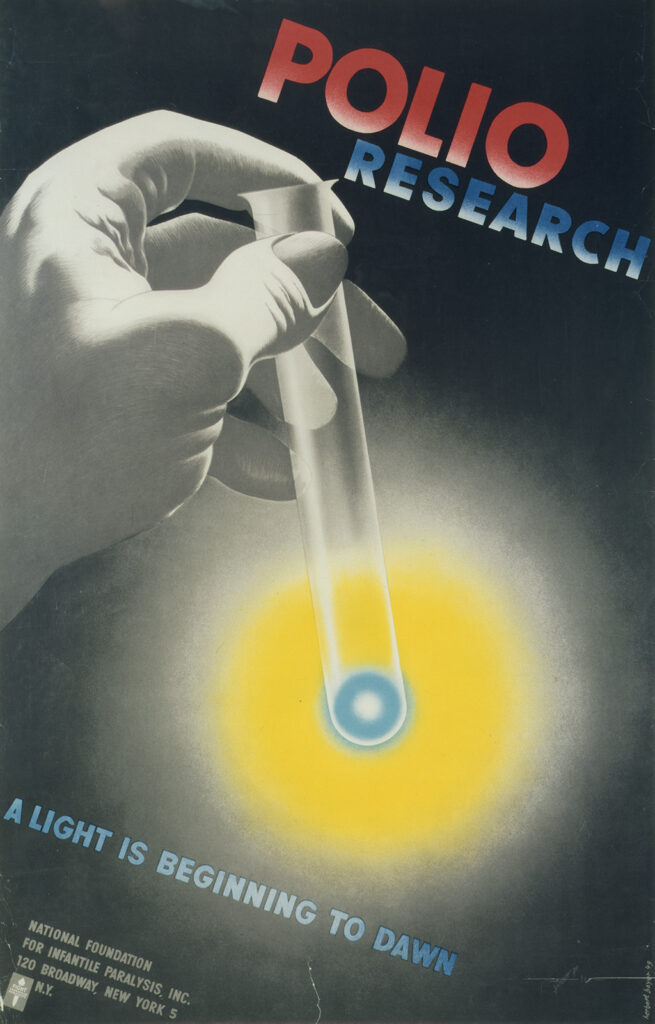
In the 1930s Maurice Brodie had shown that killed-virus vaccines could produce polio antibodies, but a lack of clear statistical proof and the inability of others to repeat his results discredited these vaccines for several years. Morgan, who was the major player in the vaccine work at Johns Hopkins, provided that missing proof in 1948 in a solo article announcing the successful long-term immunization of monkeys with a killed-virus vaccine. Her article is characteristically thorough, critically but judiciously reviewing past attempts to create a killed-virus vaccine, particularly Brodie’s, before demonstrating that inactivated virus from two of the three strains of polio (Brunhilde and Lansing) produced effective immunization against those strains.
This was five years before Salk’s public announcement of his vaccine. Oshinsky comments that if Morgan had continued her work, we would be talking about the Morgan vaccine rather than the Salk vaccine. So then why did Morgan stop working on polio?
Both Oshinsky and a 2012 biography of Bodian published by the National Academy of Sciences state that she was reluctant to take the next step in vaccine development: testing on humans.
Because polio, also known as infantile paralysis, was viewed primarily as a disease of children, any human trials would have to include children. (Brodie had tested his vaccine on thousands of children.) Children with disabilities, particularly those with developmental disabilities in state institutions, were a first stop for many kinds of experimental trials. Sure enough, in the early 1950s both Howe and Salk tested polio vaccines grown on human nerve tissue on such children.
At the time, scientists believed poliovirus would only grow in nerve tissue. Morgan opposed such testing, concerned that a vaccine grown on nerve tissue posed too great a risk of autoimmune encephalitis, in which the vaccine triggers the immune system to attack the brain. In 1949 John Enders found a way to grow the virus on non-nervous tissue, using discarded foreskins from circumcised baby boys. But by then Morgan, now Isabel Morgan Mountain, had left Johns Hopkins and vanished into 1950s suburban domesticity.
She published a few more articles on polio, with and without Bodian and Howe, in 1949 and 1950, then emerged briefly in 1958 to take her place as the only woman inducted into the Polio Hall of Fame.
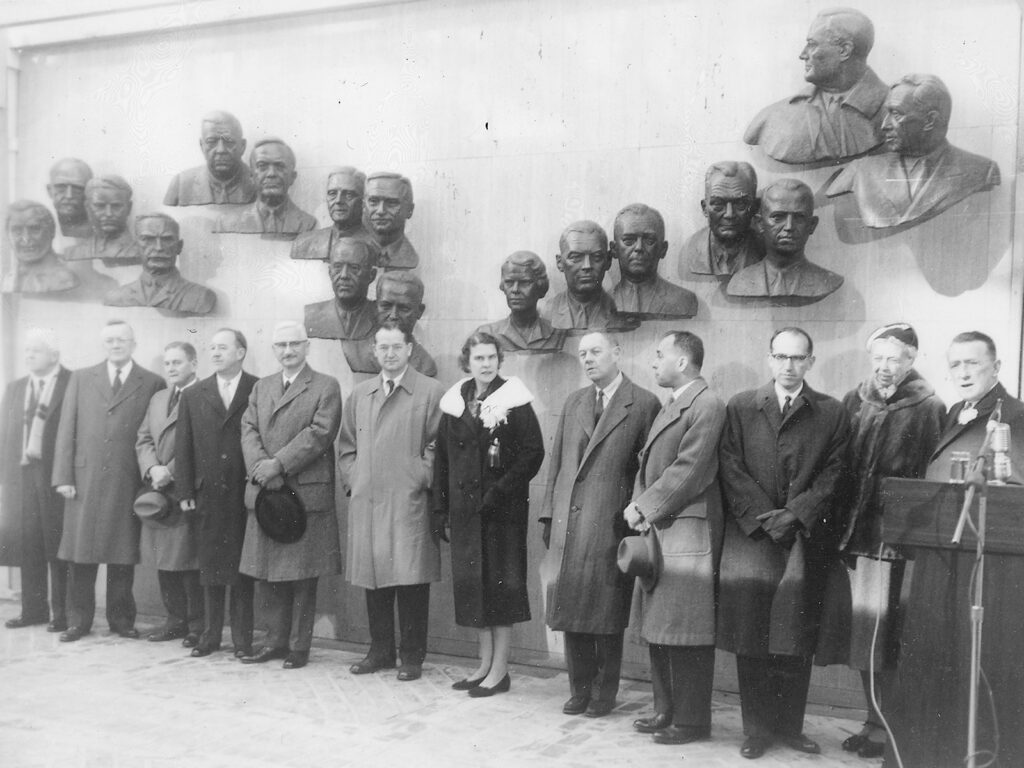
But why did she leave? It’s hard to imagine such a talented and successful researcher—with one of the century’s greatest scientific achievements within her grasp—walking away from it all for a quiet family life. It’s not as if her work situation was bad. Morgan seemed happy at Johns Hopkins, doing good science with a congenial team. Bodian, who had recruited her and who, along with his wife, Elinor, had become a good friend, was an exceptionally collaborative scientist, notably so amid the hothouse competition surrounding the development of the polio vaccine. What’s more, while Morgan left Johns Hopkins and vaccine research, she did not abandon science or polio research altogether. A look at her family background might give some clues about her motivations.
Morgan came from scientific royalty. Born in 1911, she was the youngest child of pioneering geneticist Thomas Hunt Morgan. By then her father was in his mid-40s, a professor of experimental zoology at Columbia University who had already started teasing out the genetics of inheritance through his famous Drosophila fly experiments, work that would earn him a Nobel Prize in 1933.
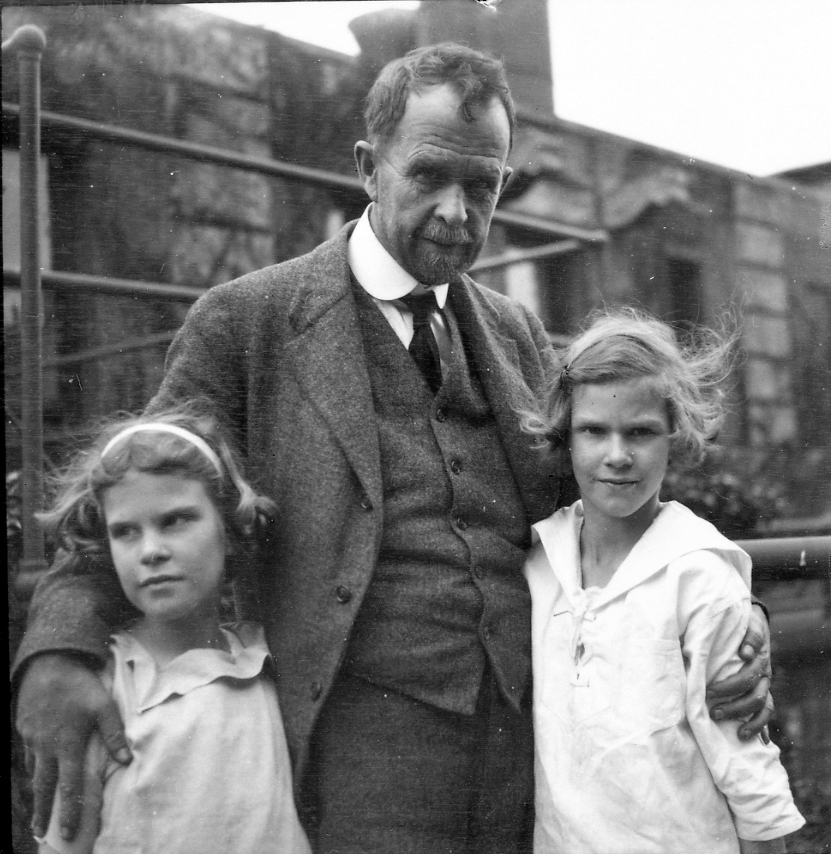
Morgan’s mother, Lilian Vaughan Sampson Morgan, had been a graduate student of Thomas Morgan while at Bryn Mawr in the 1890s. They married in 1904 and had four children between 1906 and 1911. Lilian Morgan gave up her own scientific career to care for their children and run the household, but she did not abandon science forever. At the Morgans’ summer vacation home near the Woods Hole Marine Biological Laboratory in Massachusetts, Lilian and the Morgan children would have encountered a constant stream of visiting biologists. (In 1944 Bodian met Isabel Morgan there and recruited her for his lab.)
Lilian home-schooled her children until third grade; as soon as her youngest reached that stage she returned to her husband’s lab, where she continued to work for the rest of her life. She published 16 single-authored papers, many of them on the X chromosome in Drosophila, providing important evidence for her husband’s chromosome theory. A 1983 biographical sketch of Lilian by Katherine Keenan notes that she always worked alone. When Morgan was growing up, both her parents were working scientists, but only one of them had household responsibilities. Among her siblings, Morgan was the only one who chose to become a scientist. Her sisters married scientists, while her brother became an engineer.
In many ways Morgan followed her mother’s path. She married late: Lilian was 34, Morgan 38. In Morgan’s case, her marriage came with a family and a house in the suburbs of New York. Mountain had an 11-year-old son, Jimmy, who is usually described as having a learning disability. Unlike her mother, Morgan did not wait 16 years to publish her next article. She took a job with the Westchester County Department of Laboratory Research, where conditions were not ideal for the research she wanted to do on the processes of antibody production. Even so she obtained a grant from the National Institutes of Health and made do with limited resources.
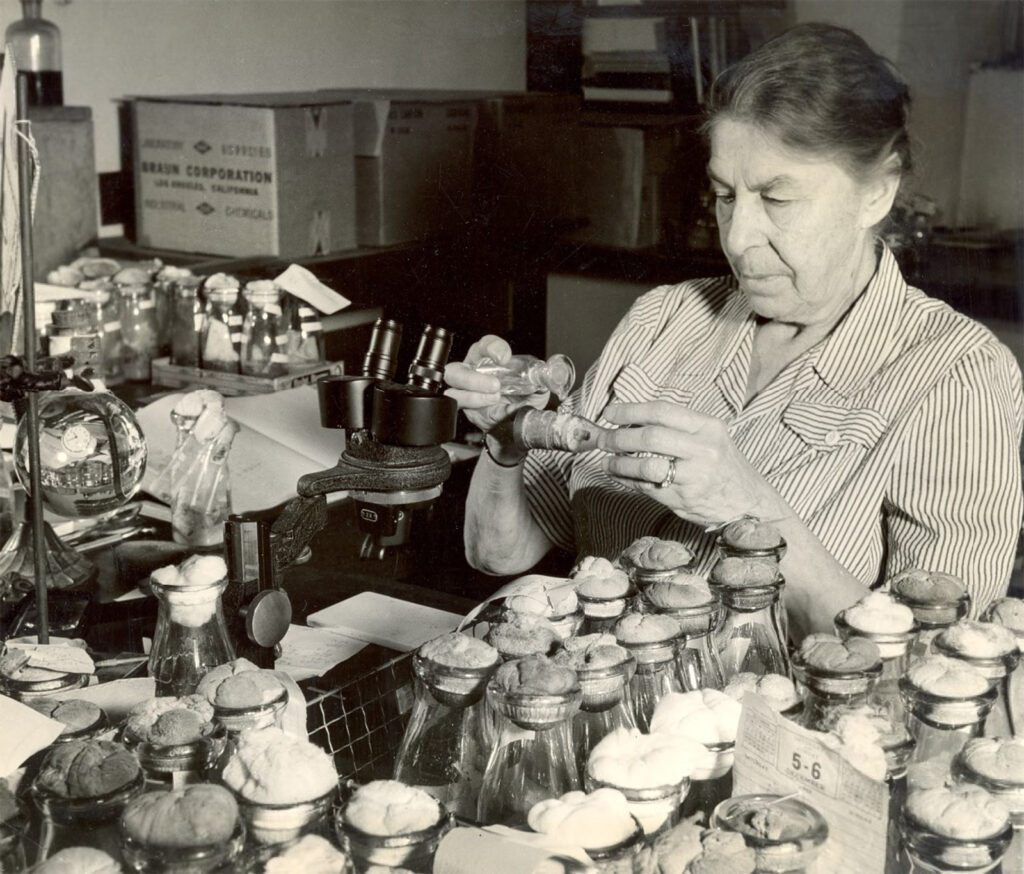
Morgan did not stay in Westchester for long. Only the first of her five research articles published in 1955 had her Westchester address. Her next address was Babies Hospital, Columbia-Presbyterian Medical Center, New York. Hattie Alexander, a pediatrician and pioneer in the study of bacterial infections, led the microbiology laboratory at Babies Hospital and hired many women to work in her lab. In July 1955 a paper on polioviruses appeared with Morgan and Alexander as coauthors, along with two other women from the lab. Perhaps Alexander invited Morgan to Columbia because of her expertise in polio and other viruses. The 1955 paper turned out to be the first of many, and Morgan’s association with Alexander and her lab extended at least into 1959.
In 1960 Morgan’s stepson, Jimmy Mountain, was killed in a mid-air plane collision over the skies of New York City, a loss she found devastating. At some point she left Alexander’s lab and pursued a longstanding interest in biostatistics, obtaining a master’s degree from Columbia and leaving polio research behind for good. Later in the 1960s she collaborated with her husband, Joe, and several others on epidemiological studies of the effects of air pollution; she also collaborated with other scientists on studies of cancer therapies at the Sloan-Kettering Institute for Cancer Research. Joe Mountain died in 1970, after which Morgan continued her cancer work. My impression of her in the 1960s and 1970s is of a restless researcher without a firm institutional base. The last scientific publication I found for her is from 1979.
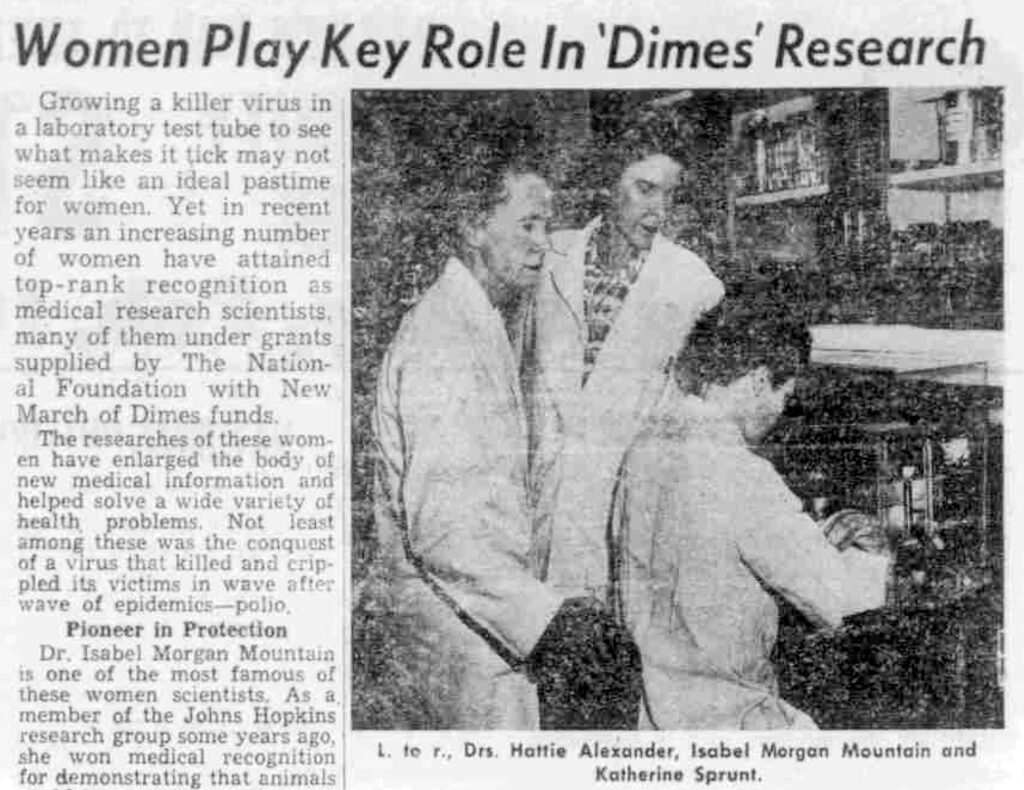
Later in life, Morgan assumed the position of keeper of the family history. She took on custody of the house at Woods Hole, and she was the family member who showed up for various events commemorating her illustrious father. Her own scientific work mostly faded from view.
Was Morgan written out of the polio story because she was a woman? If so, it is an example of the “Matilda effect.” The term was coined by historian of science Margaret Rossiter and references activist Matilda Gage, who in her 1870 essay “Woman as Inventor” first described the tendency for women’s scientific work to be overlooked or attributed to men. There is some evidence for this being the case. Writing in 1983, geneticist Ray Owen recalled a 1950 genetics conference at Caltech at which Morgan is listed as the only woman in attendance. In his introduction, the editor of the proceedings, Max Delbrück, called her contribution interesting but too narrowly focused. Therefore, he omitted her from the volume. We can see some echoes here of James Watson’s disregard of Rosalind Franklin in the same period. Interestingly though, Rossiter herself devoted only a very short passage to Morgan in the first of three volumes on women scientists in the United States.
Whatever the case, I believe Morgan’s story complicates a narrative based mainly on sexism. The choices she made in life also contributed to her future obscurity. Her polio work was not suppressed but built upon by others, particularly Salk, who had a poor record of acknowledging his colleagues and predecessors. Had Morgan continued her vaccine research and proceeded to human trials, she almost certainly would have developed the killed-virus vaccine before Salk, and we would indeed be talking about the Morgan vaccine rather than the Salk vaccine.
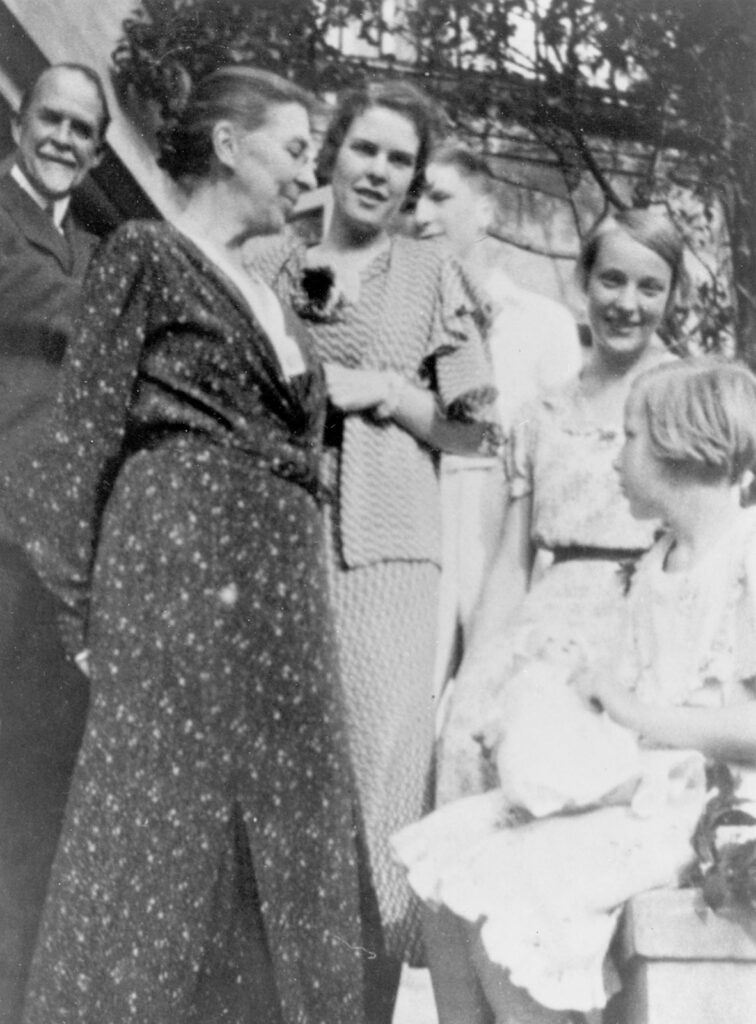
Oshinsky argues that Morgan “never got the chance” to pursue her vaccine. But, in fact, she chose not to go forward, both for personal and ethical reasons. Instead, she chose to do other kinds of science, and she chose to make her family a priority. Did 1950s societal norms constrain the choices available to her? I struggle with that, but I don’t see her as a victim.
Archival evidence might shed light on her choices, but Covid-19 restrictions have blocked access for more than a year. Oshinsky cites uncatalogued papers of hers housed with the Bodian papers at Johns Hopkins. There may be correspondence in the Hattie Alexander papers at Columbia that shed light on how Morgan became attached to the lab at Babies Hospital. There are some materials among the Olitsky papers at the American Philosophical Society. Notably, her papers are mingled with those of the men she worked with rather than being in a separate archive. This too may be a result of the choices she made in 1949.
Would we be questioning Morgan’s choices or motives had she been a man?
I believe that she made her choices with open eyes and an open heart, and that once she made them she did not look back. Historian of biology Garland Allen, who knew her well, described her to me as “a wonderful friend . . . I admired her a great deal,” but also referred to her as “very strong, almost stoic.” This strong, smart, compassionate woman deserves more attention from historians of science than she has thus far received.

